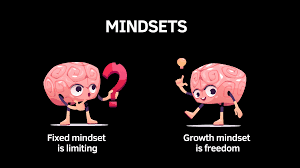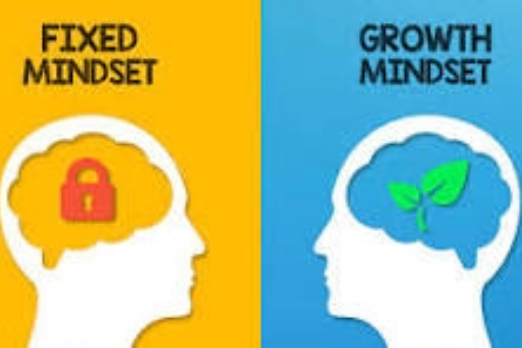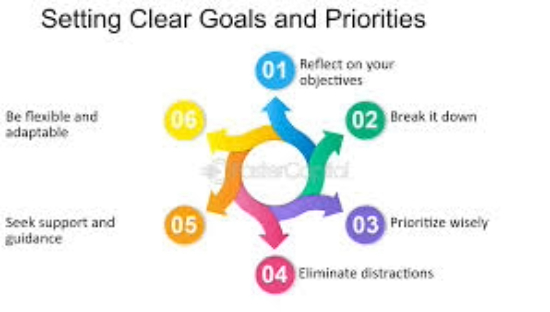Work Smarter, Not Harder: Embracing a Growth Mindset at the Office
 Bhargavi Manubolu
Bhargavi Manubolu
Introduction
In the bustling landscape of modern workplaces, the mantra "Work smarter, not harder" has more than just a motivational slogan. It's a guiding principle for achieving efficiency and success. At its core lies the concept of embracing a growth mindset, a philosophy that champions continuous learning, adaptability, and innovation. In this blog, we'll delve into what it means to work smarter, not harder, and explore how adopting a growth mindset can revolutionize the way we approach our professional lives. From enhancing productivity to fostering a culture of creativity, let's uncover the transformative power of embracing a growth mindset in the office.
I. Understanding the Growth Mindset

A. What is a Growth Mindset?
A growth mindset is the belief that abilities and intelligence can be developed through dedication and hard work. Individuals with a growth mindset see challenges as opportunities to learn and grow, rather than obstacles to avoid.
B. The Benefits of Adopting a Growth Mindset
By embracing a growth mindset, individuals can unlock their full potential, increase resilience in the face of setbacks, and experience higher levels of motivation and achievement.
C. Overcoming Fixed Mindset Limitations
Fixed mindset individuals believe that their intelligence and abilities are static traits. To overcome this limitation, it's crucial to challenge negative self-talk, embrace failures as learning experiences, and cultivate a desire for continuous improvement.
II. Setting Clear Goals and Prioritizing Tasks

A. Defining SMART Goals
SMART goals are specific, measurable, achievable, relevant, and time-bound. By setting SMART goals, individuals can create a roadmap for success and track their progress effectively.
B. Strategies for Effective Goal Setting
Effective goal setting involves breaking down larger goals into smaller, manageable tasks, aligning goals with values and priorities, and regularly reviewing and adjusting goals as needed.
C. Techniques for Prioritizing Tasks
Prioritizing tasks involves identifying urgent and important tasks, setting deadlines, and focusing on high-impact activities that align with overarching goals.
III. Developing Time Management Skills

A. Identifying Time Wasters and Eliminating Them
Common time wasters include multitasking, procrastination, and inefficient communication. By identifying and eliminating time wasters, individuals can reclaim valuable time and improve productivity.
B. The Pomodoro Technique for Focus and Productivity
The Pomodoro Technique is a time management method that involves working in focused intervals with short breaks in between. This technique can help individuals maintain focus, avoid burnout, and enhance productivity.
C. Creating a Daily Schedule to Optimize Productivity
Creating a daily schedule allows individuals to prioritize tasks, allocate time for important activities, and reduce decision fatigue. By following a structured schedule, individuals can make the most of their day.
IV. Embracing Continuous Learning and Feedback

A. Seeking Opportunities for Growth and Development
Continuous learning involves seeking out new challenges, acquiring new skills, and staying curious about the world. By embracing opportunities for growth and development, individuals can expand their knowledge and expertise.
B. Receiving and Implementing Feedback
Feedback is essential for personal and professional growth. By actively seeking feedback, reflecting on suggestions, and implementing changes, individuals can enhance their performance and discover areas for improvement.
C. Establishing a Culture of Learning in the Workplace
Fostering a culture of learning involves encouraging collaboration, sharing knowledge and best practices, and providing resources for continuous education. By promoting a culture of learning, organizations can stay competitive and adapt to changing environments.
V. Building Strong Relationships and Collaboration

A. Effective Communication Strategies
Effective communication is the foundation of strong relationships. By practicing active listening, empathy, and clarity in communication, individuals can build trust and rapport with colleagues.
B. The Importance of Networking and Building Connections
Networking allows individuals to expand their professional circles, gain insights from diverse perspectives, and discover new opportunities for growth and collaboration.
C. Encouraging Collaboration and Teamwork
Collaboration is essential for achieving shared goals and driving innovation. By fostering a spirit of teamwork, individuals can leverage collective strengths, creativity, and expertise to achieve success.
Conclusion
In conclusion, embracing a growth mindset at the office is essential for maximizing efficiency and productivity. By understanding the principles of a growth mindset, setting clear goals, managing time effectively, continuously learning and seeking feedback, and fostering strong relationships and collaboration, individuals can work smarter, not harder.
FAQs
Q: How can I shift from a fixed mindset to a growth mindset?
A: Start by challenging your beliefs, embracing failures as opportunities for growth, and seeking out learning experiences.
Q: What is the key to prioritizing tasks effectively?
A: Prioritizing tasks involves identifying urgent and important tasks, setting deadlines, and focusing on high-impact activities.
Q: How can I build strong relationships in the workplace?
A: Communication, active listening, and empathy are essential for building strong relationships. Additionally, fostering collaboration and teamwork can strengthen relationships within a team.
Subscribe to my newsletter
Read articles from Bhargavi Manubolu directly inside your inbox. Subscribe to the newsletter, and don't miss out.
Written by
